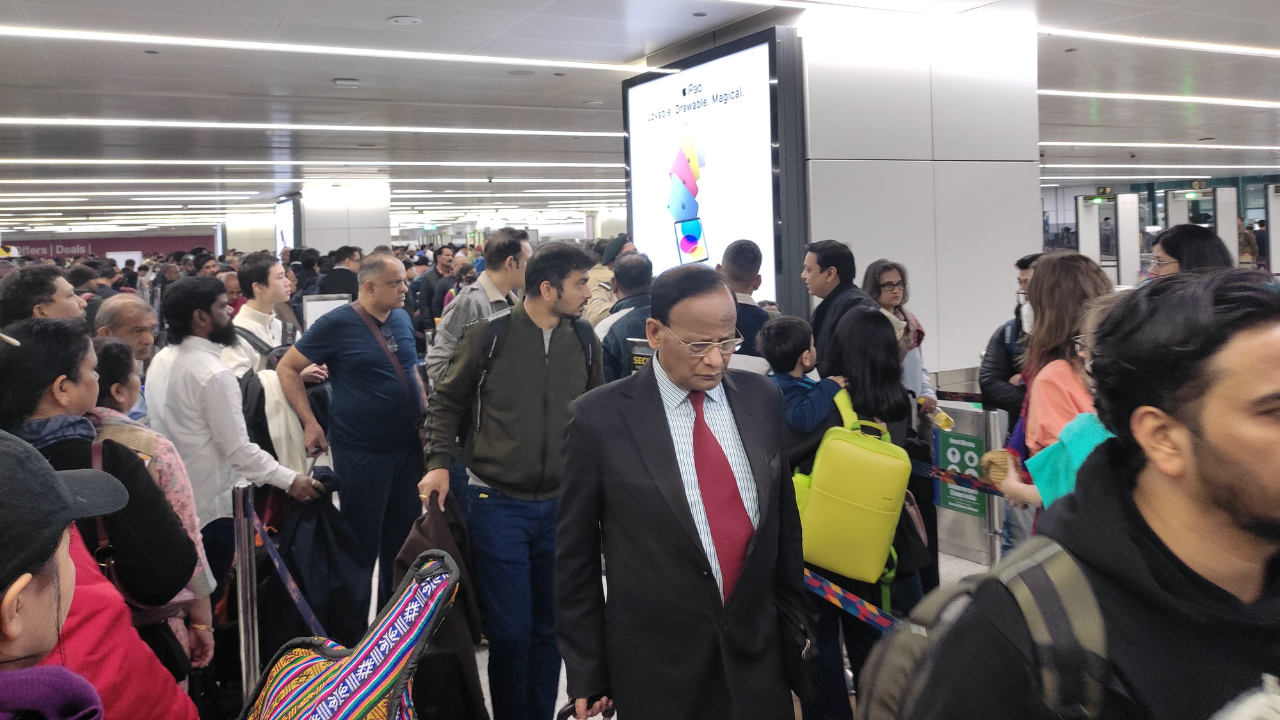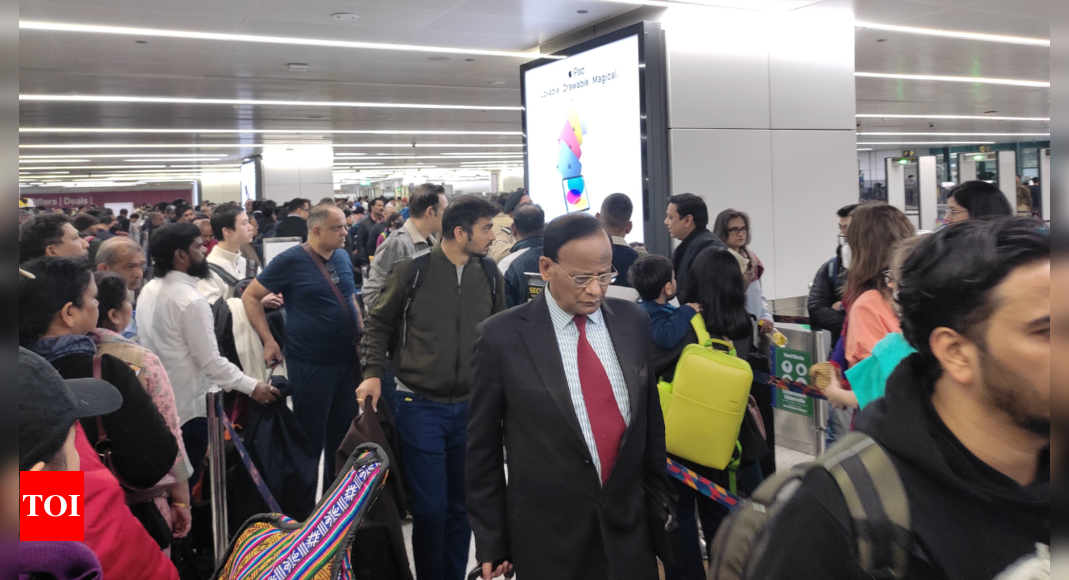
NEW DELHI: Security check areas across airports will no longer be allowed to have commercial ad displays and this place will be used only to highlight prohibited items that can’t be taken onboard aircraft in hand bags and check-in baggage. The idea: Passengers use the waiting time in queues before undergoing pre-embarkation security check (PESC) to remove such items from cabin bags on their own and in future not pack prohibited items in check-in luggage. The Bureau of Civil Aviation Security (BCAS) took this decision as almost 25,000 prohibited items on an average are removed from bags of air travellers in India daily (cabin + checked-in), which means security personnel spend a lot of time and energy on this single issue.
Hasan termed the large number of prohibited items in bags “failure on our (aviation ecosystem) part”. “We have not been able to communicate about the same as India has a large number of first-time flyers who may not be aware of what all cannot be taken in handbag and check-in luggage,” he said while announcing the launch of “aviation security culture week-2023” with the tagline “see it, say it, secure it.”
BCAS and CISF say they strive to provide foolproof security without making passengers wait for a long time. The DG does not foresee a return of the massive congestion seen at some big airports like Delhi, Mumbai and Bengaluru last year. “The congestion seen last December was due to security check area handling more passengers than its capacity. That was compounded by more trays being needed per passenger to keep jackets in winter time. Since then more security check lines have been created at most airports. Delhi T3, for instance, had 13 lines then and has 25 now. This winter we should not see a rerun of what happened last December,” he said.
BCAS had this April asked airports handling more than 50 lakh passengers annually to install 3D computed tomography X-ray (CTX) machines for cabin bag checks by December 31, 2023. These machines do not require passengers to keep PEDs, chargers and liquids in separate trays, something that has to be done with the current gen 2D X-ray scanners being used. And all hyper sensitive airports seeing a crore and more passengers annually have to introduce full body scanners (FBS) by the year-end.
“All airport operators are going to the same 2-3 vendors and procurement cycle is an issue. However, we have not extended the deadline so far,” he said.
On an average about 10 lakh passengers pass through 131 Indian airports on a daily basis. Almost 11,000 screeners are deployed at security check points who screen almost 5 lakh departing passengers and 9 lakh hand bags daily through 600 baggage X Ray machines and 1,000 door frame metal detectors.
Captain Devi Sharan, captain of the hijacked Indian Airline flight IC 814 that was taken to Kandahar in December 1999, was present at the BCAS event on Monday. He said a lot of changes were brought in after that hijacking and that due to these measures Indian skies have been safe since then.
However changing times means changing challenges. Warning against complacency seeping in, Hasan listed new age challenges like cyber and drone threats are there now in addition to “traditional” ones like hijacking and city side attacks.
“In India 4.8 lakh passengers taking 3,300 flights are frisked on a daily basis and the number is growing. Detecting a prohibited item and removing it takes about three minutes per bag on average. So 25,000 items means 75,000 minutes or 1,250 hours. This translates into 12 hours at security check at an airport go into this which should be used for tackling far graver threats,” BCAS DG Zulfiquar Hasan said on Monday.
For cabin bags, the most commonly detected prohibited items are: lighters (26%), scissors (22%), knives (16%) and liquids (14%).
Hasan termed the large number of prohibited items in bags “failure on our (aviation ecosystem) part”. “We have not been able to communicate about the same as India has a large number of first-time flyers who may not be aware of what all cannot be taken in handbag and check-in luggage,” he said while announcing the launch of “aviation security culture week-2023” with the tagline “see it, say it, secure it.”
BCAS and CISF say they strive to provide foolproof security without making passengers wait for a long time. The DG does not foresee a return of the massive congestion seen at some big airports like Delhi, Mumbai and Bengaluru last year. “The congestion seen last December was due to security check area handling more passengers than its capacity. That was compounded by more trays being needed per passenger to keep jackets in winter time. Since then more security check lines have been created at most airports. Delhi T3, for instance, had 13 lines then and has 25 now. This winter we should not see a rerun of what happened last December,” he said.
BCAS had this April asked airports handling more than 50 lakh passengers annually to install 3D computed tomography X-ray (CTX) machines for cabin bag checks by December 31, 2023. These machines do not require passengers to keep PEDs, chargers and liquids in separate trays, something that has to be done with the current gen 2D X-ray scanners being used. And all hyper sensitive airports seeing a crore and more passengers annually have to introduce full body scanners (FBS) by the year-end.
“All airport operators are going to the same 2-3 vendors and procurement cycle is an issue. However, we have not extended the deadline so far,” he said.
On an average about 10 lakh passengers pass through 131 Indian airports on a daily basis. Almost 11,000 screeners are deployed at security check points who screen almost 5 lakh departing passengers and 9 lakh hand bags daily through 600 baggage X Ray machines and 1,000 door frame metal detectors.
Captain Devi Sharan, captain of the hijacked Indian Airline flight IC 814 that was taken to Kandahar in December 1999, was present at the BCAS event on Monday. He said a lot of changes were brought in after that hijacking and that due to these measures Indian skies have been safe since then.
However changing times means changing challenges. Warning against complacency seeping in, Hasan listed new age challenges like cyber and drone threats are there now in addition to “traditional” ones like hijacking and city side attacks.
Source link

